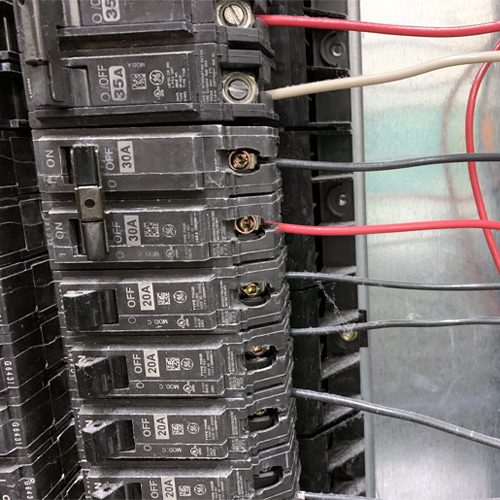Top Tips for Effective Electrical System Troubleshooting
Troubleshooting electrical systems needs a methodical technique, grounded in a comprehensive understanding of electrical principles and security procedures. The subtleties of effective fixing prolong past simple technological expertise; recognizing just how to record findings and prioritize security can substantially influence results.
Understand the Fundamentals
Comprehending the fundamentals of electrical systems is necessary for reliable troubleshooting, as a strong foundation enables professionals to identify and solve problems a lot more effectively. A detailed grasp of electric concepts, such as voltage, present, resistance, and power, is vital in determining the origin of problems. Voltage is the electric potential difference that drives existing with a circuit, while resistance opposes the flow of current, impacting the total functionality of the system.
Knowledge with circuit elements, including resistors, capacitors, diodes, and switches over, is also critical. Each component plays a distinctive function in circuit actions and can impact efficiency when malfunctioning. Furthermore, understanding collection and identical circuit configurations is crucial, as these arrangements affect the distribution of voltage and present within the system.
Professionals must be aware of possible hazards, such as shock and short circuits, to carry out secure troubleshooting techniques. By understanding these foundational concepts, specialists enhance their capability to carry out efficient diagnostics and repair services, inevitably leading to boosted efficiency and integrity of electric systems (electrical system troubleshooting).
Gather Necessary Devices
Reliable troubleshooting of electric systems calls for the appropriate collection of devices to detect and settle concerns properly. A fully equipped professional can dramatically improve effectiveness and efficiency in determining problems. Crucial tools include a multimeter, which measures voltage, current, and resistance, permitting for specific analyses of electric elements. Clamp meters are also important for determining current without separating the circuit, ensuring safety and security and comfort.
Additionally, shielded hand tools such as screwdrivers, pliers, and cord strippers are crucial for securely manipulating electric links. It is additionally advisable to have a circuit tester accessible to validate the existence of voltage in electrical outlets and cables. For more complicated systems, a thermal imaging video camera can aid identify overheating elements, suggesting potential failings.

Follow a Methodical Technique
Having actually collected the ideal devices, the following action in repairing electric systems is to adhere to an organized approach. A methodical strategy guarantees that technicians can identify faults efficiently and accurately, reducing downtime and avoiding unnecessary repair services.
Begin by assessing the system's schematic layouts and requirements. Recognizing the layout and functional parameters will provide context for diagnosing concerns. Next off, isolate the problem area by utilizing a procedure of elimination. This entails checking each part systematically, starting from the source of power and functioning in the direction of the tons.
Make use of testing devices, such as multimeters and oscilloscopes, to gather unbiased data concerning voltage, present, and resistance at various factors within the system. This empirical proof will certainly direct your troubleshooting efforts and aid to confirm or remove prospective causes of failure.
In addition, take into consideration ecological factors that might influence the system's efficiency, such as temperature variations or wetness ingress. A comprehensive examination of electrical wiring, links, and elements will certainly guarantee that all possibilities are made up.
Paper Your Searchings For
Thorough paperwork is important in the fixing procedure of electric systems. This technique not only aids in comprehending the root cause of click this link the issue however additionally offers as a reference for future troubleshooting initiatives.

Furthermore, maintaining a log of parts changed or fixings executed is invaluable. This details sustains stock administration and can help assess the long Homepage life and dependability of particular components.
Inevitably, the documents procedure ought to be comprehensive yet concise, making it possible for simple retrieval and testimonial - electrical system troubleshooting. By prioritizing comprehensive documentation, specialists can develop a useful knowledge base that not just aids in current troubleshooting yet additionally equips future maintenance initiatives, thereby boosting general system integrity

Prioritize Precaution
Acknowledging the inherent dangers connected with electric systems is vital for guaranteeing safety and security during troubleshooting. Electric shock, burns, and tools damage are simply a few of the possible risks that service technicians deal with. Prioritizing precaution is not only a lawful obligation but additionally a moral essential that safeguards both the service technician and the surrounding setting.
Before beginning any kind of troubleshooting job, technicians must wear appropriate individual protective devices (PPE), consisting of shielded gloves, security glasses, and flame-resistant apparel. Ensuring that the work area is dry and devoid of mess can dramatically decrease the danger of mishaps. In addition, it is necessary to de-energize circuits before beginning any work, verifying that they are not live with the use of a multimeter or voltage tester.
Establishing clear interaction methods with group participants is additionally essential; this makes certain that every person recognizes possible threats and the status of the electrical system being worked with. Having an emergency feedback strategy in location can show important in the event of a case. By focusing on security steps, professionals can successfully alleviate dangers and foster a safer office.
Conclusion
Effective electric system fixing relies on a comprehensive understanding of basic principles and a methodical technique. By view it gathering necessary tools, adhering to methodical assessment strategies, and thoroughly documenting searchings for, the troubleshooting procedure ends up being more reliable and trustworthy. Prioritizing safety and security steps ensures the wellness of people involved and the integrity of the electric system. Applying these techniques will certainly enhance the repairing experience, leading to quicker resolutions and enhanced functional effectiveness in electric systems.
Comments on “Customized mechanical engineering industry support to address unique challenges.”